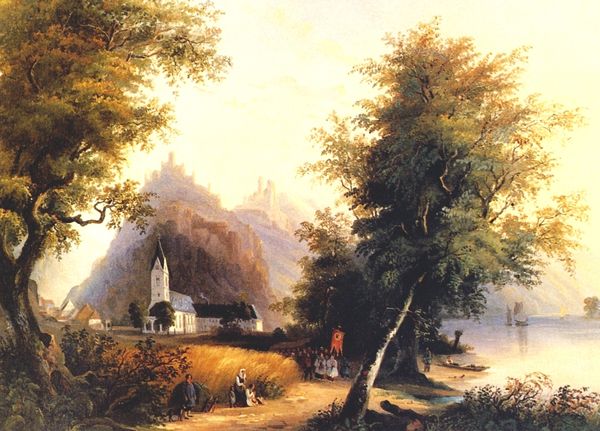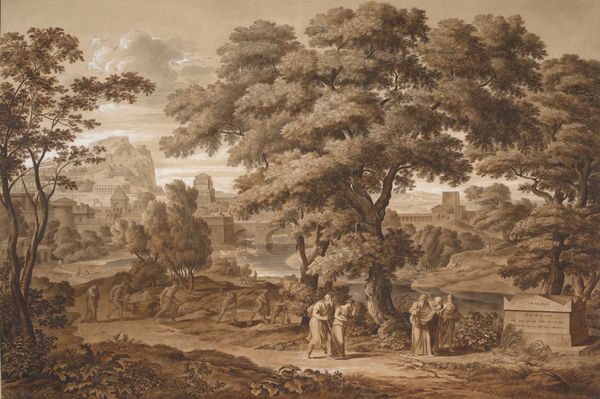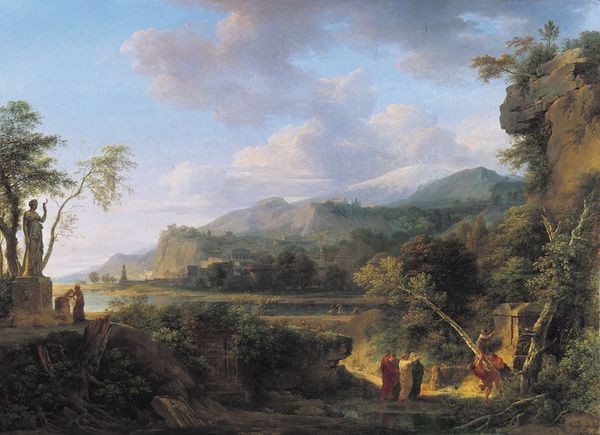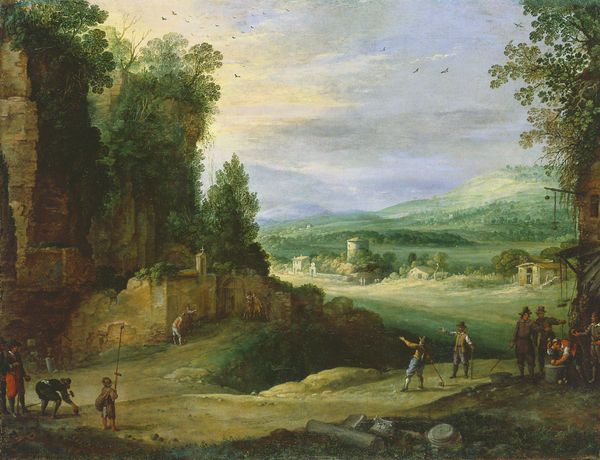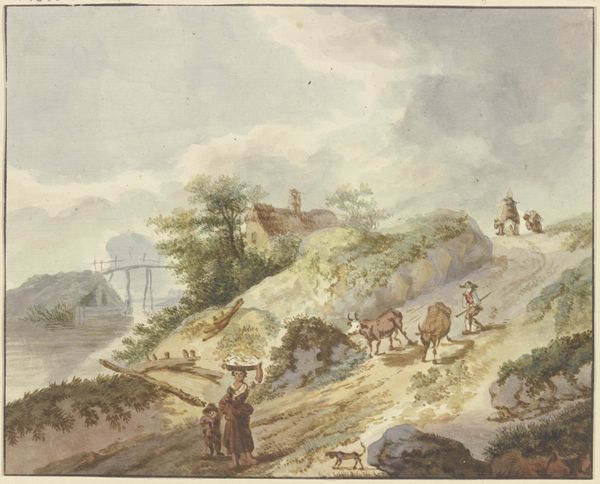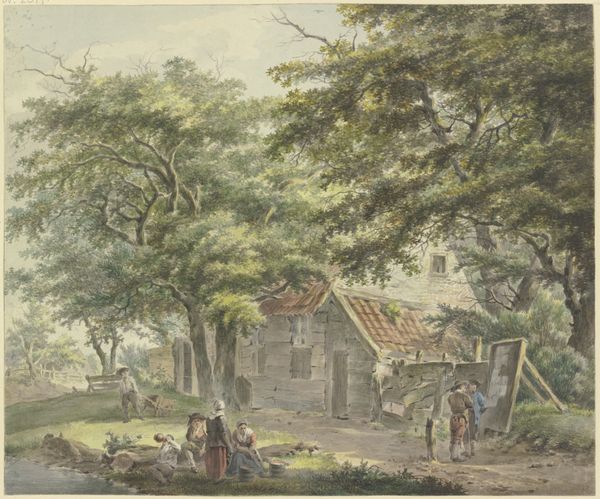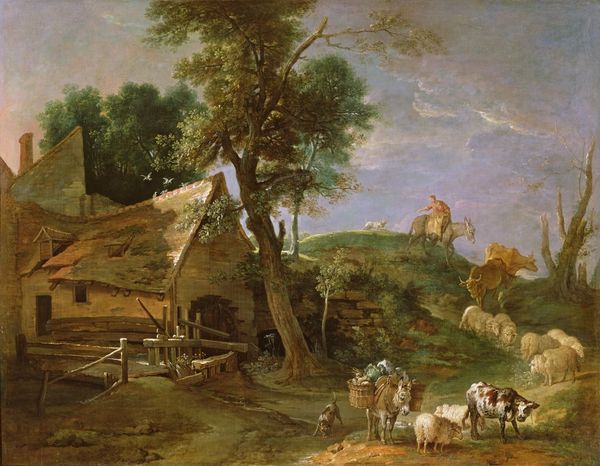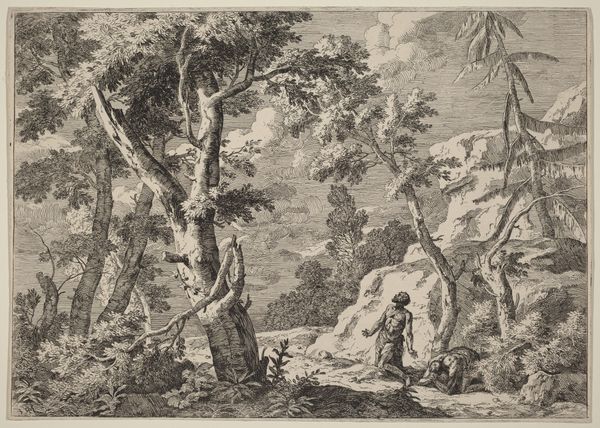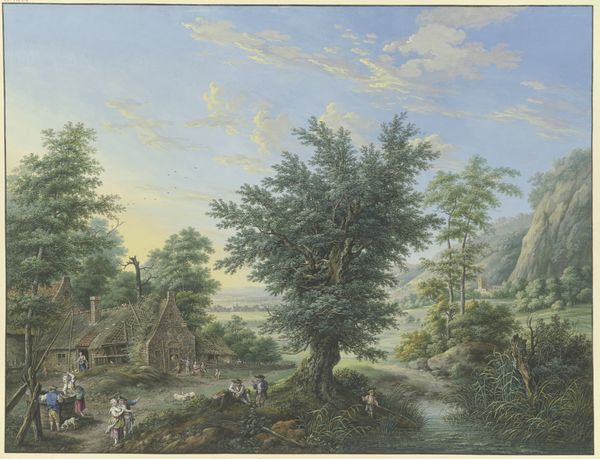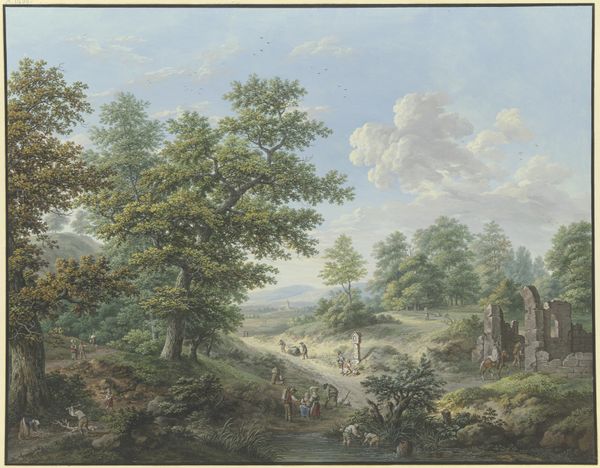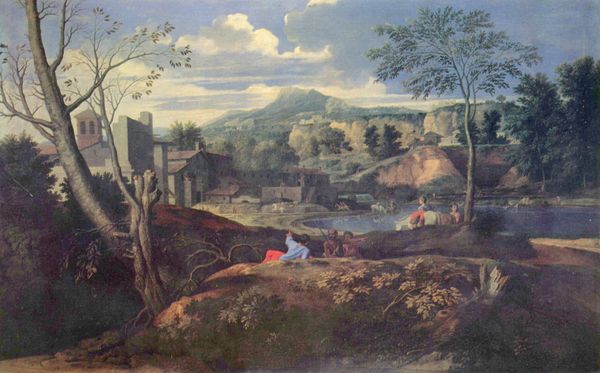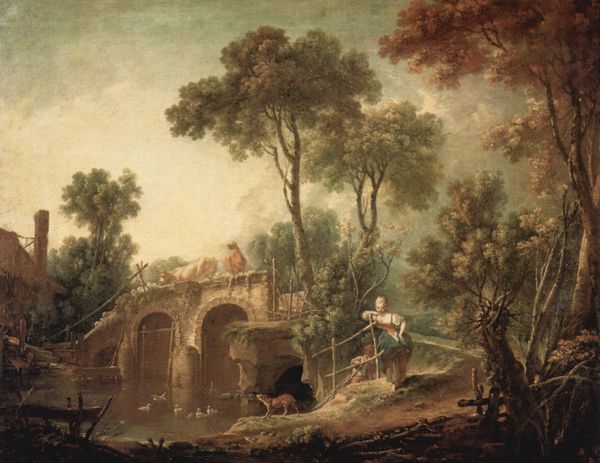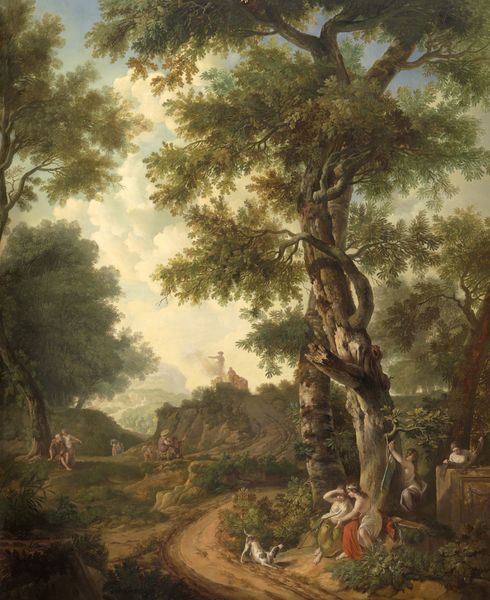
painting, oil-paint
#
narrative-art
#
painting
#
oil-paint
#
landscape
#
figuration
#
oil painting
#
genre-painting
#
history-painting
#
academic-art
#
rococo
Dimensions: 65 x 54 cm
Copyright: Public domain
Curator: Here we have Francois Boucher's "Landscape with the Brother Lucas", an oil painting dating back to around 1750, currently housed in the Hermitage Museum. Editor: Immediately, I notice the pastoral fantasy—a kind of escapist dreamscape, rendered with soft, almost hazy light. Is it overly sentimental, or genuinely charming? Curator: The composition is quite deliberate. See how Boucher orchestrates a balanced asymmetry with the figures on the left mirroring the chapel structure on the right, linked by the bridge? Editor: Absolutely, but consider the material implications. Look at how the oil paint itself allows for such delicate gradations of light, those wispy clouds, and the texture of the foliage. It all speaks to the resources available to Boucher, both materially and in terms of labor. Who prepared these pigments, and how were they sourced? Curator: An interesting question! From a purely formal perspective, notice the way the color palette – mostly muted greens and browns – is punctuated by those small figures in brilliant red and pink. That chromatic touch activates the entire scene. Editor: I see the red, yes, drawing your eye to the figures but I’m wondering what kind of lead went into producing that pigment in 18th-century France. Also, that cottage doesn't look quite functional, which is perhaps telling. Is this idealization concealing any of the true, often difficult, realities of rural life? Curator: Boucher's choice to focus on idealized scenes connects him directly to the Rococo aesthetic—a style obsessed with pleasure and elegance, which is reflected in the overall delicate execution of the oil on canvas. It exemplifies a taste for fantasy and an intentional detachment from gritty realities. Editor: Still, analyzing the social climate along with Boucher's process might allow us to really excavate these Rococo values and fantasies regarding natural resources, and see beyond simply 'elegance'. Curator: Agreed! Boucher invites us to appreciate the formal perfection and carefully constructed illusion of unspoiled nature and I would love to explore what went into the oil creation back then, to enhance understanding on different levels. Editor: Definitely. Ultimately, this glimpse of 18th-century technique inspires deeper curiosity for me, especially concerning labor and material production!
Comments
No comments
Be the first to comment and join the conversation on the ultimate creative platform.
